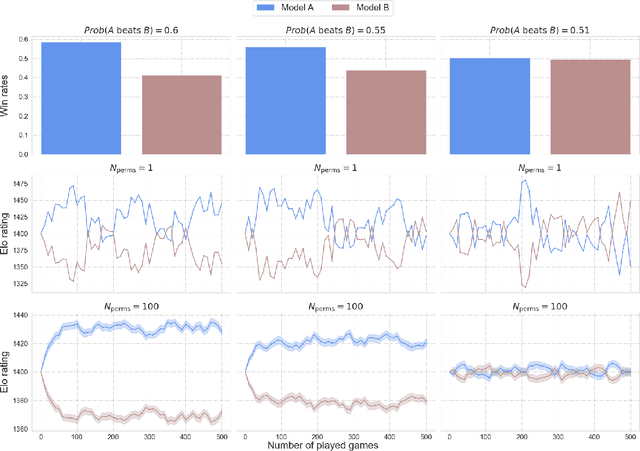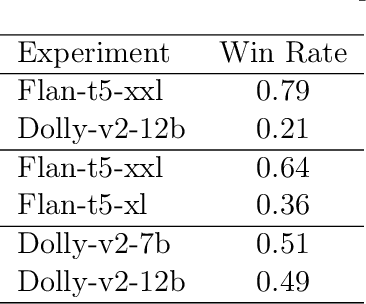Meriem Boubdir
Detecting Data Contamination in LLMs via In-Context Learning
Oct 30, 2025Abstract:We present Contamination Detection via Context (CoDeC), a practical and accurate method to detect and quantify training data contamination in large language models. CoDeC distinguishes between data memorized during training and data outside the training distribution by measuring how in-context learning affects model performance. We find that in-context examples typically boost confidence for unseen datasets but may reduce it when the dataset was part of training, due to disrupted memorization patterns. Experiments show that CoDeC produces interpretable contamination scores that clearly separate seen and unseen datasets, and reveals strong evidence of memorization in open-weight models with undisclosed training corpora. The method is simple, automated, and both model- and dataset-agnostic, making it easy to integrate with benchmark evaluations.
NVIDIA Nemotron Nano 2: An Accurate and Efficient Hybrid Mamba-Transformer Reasoning Model
Aug 21, 2025



Abstract:We introduce Nemotron-Nano-9B-v2, a hybrid Mamba-Transformer language model designed to increase throughput for reasoning workloads while achieving state-of-the-art accuracy compared to similarly-sized models. Nemotron-Nano-9B-v2 builds on the Nemotron-H architecture, in which the majority of the self-attention layers in the common Transformer architecture are replaced with Mamba-2 layers, to achieve improved inference speed when generating the long thinking traces needed for reasoning. We create Nemotron-Nano-9B-v2 by first pre-training a 12-billion-parameter model (Nemotron-Nano-12B-v2-Base) on 20 trillion tokens using an FP8 training recipe. After aligning Nemotron-Nano-12B-v2-Base, we employ the Minitron strategy to compress and distill the model with the goal of enabling inference on up to 128k tokens on a single NVIDIA A10G GPU (22GiB of memory, bfloat16 precision). Compared to existing similarly-sized models (e.g., Qwen3-8B), we show that Nemotron-Nano-9B-v2 achieves on-par or better accuracy on reasoning benchmarks while achieving up to 6x higher inference throughput in reasoning settings like 8k input and 16k output tokens. We are releasing Nemotron-Nano-9B-v2, Nemotron-Nano12B-v2-Base, and Nemotron-Nano-9B-v2-Base checkpoints along with the majority of our pre- and post-training datasets on Hugging Face.
Elo Uncovered: Robustness and Best Practices in Language Model Evaluation
Nov 29, 2023



Abstract:In Natural Language Processing (NLP), the Elo rating system, originally designed for ranking players in dynamic games such as chess, is increasingly being used to evaluate Large Language Models (LLMs) through "A vs B" paired comparisons. However, while popular, the system's suitability for assessing entities with constant skill levels, such as LLMs, remains relatively unexplored. We study two fundamental axioms that evaluation methods should adhere to: reliability and transitivity. We conduct extensive evaluation of Elo behaviour, illustrating that individual Elo computations exhibit volatility and delving into the impact of varying the Elo rating system's hyperparameters. We show that these axioms are not always satisfied raising questions about the reliability of current comparative evaluations of LLMs. If the current use of Elo scores is intended to substitute the costly head-to-head comparison of LLMs, it is crucial to ensure the ranking is as robust as possible. Guided by the axioms, our findings offer concrete guidelines for enhancing the reliability of LLM evaluation methods, suggesting a need for reassessment of existing comparative approaches.
Which Prompts Make The Difference? Data Prioritization For Efficient Human LLM Evaluation
Oct 22, 2023Abstract:Human evaluation is increasingly critical for assessing large language models, capturing linguistic nuances, and reflecting user preferences more accurately than traditional automated metrics. However, the resource-intensive nature of this type of annotation process poses significant challenges. The key question driving our work: "is it feasible to minimize human-in-the-loop feedback by prioritizing data instances which most effectively distinguish between models?" We evaluate several metric-based methods and find that these metrics enhance the efficiency of human evaluations by minimizing the number of required annotations, thus saving time and cost, while ensuring a robust performance evaluation. We show that our method is effective across widely used model families, reducing instances of indecisive (or "tie") outcomes by up to 54% compared to a random sample when focusing on the top-20 percentile of prioritized instances. This potential reduction in required human effort positions our approach as a valuable strategy in future large language model evaluations.
 Add to Chrome
Add to Chrome Add to Firefox
Add to Firefox Add to Edge
Add to Edge